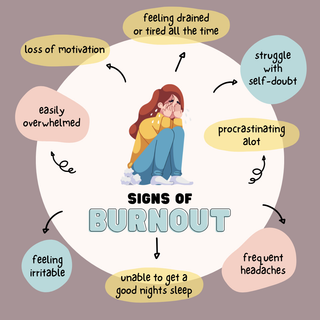Burnout is one of those words that gets thrown around in legal circles like “pivot,” “synergy,” or “resilience.” We use it so often that it begins to sound harmless. But burnout is not a buzzword. It is a multidimensional syndrome, well studied in organizational psychology and occupational health, that deserves serious attention in law.
Defining Burnout: More Than Tiredness
People often use the term “burnout” to describe any state of fatigue, but the scientific definition is more specific.
The World Health Organization defines burnout as:
“A syndrome conceptualized as resulting from chronic workplace stress that has not been successfully managed. [...] Characterized by three dimensions: (1) feelings of energy depletion or exhaustion; (2) increased mental distance from one’s job, or feelings of negativism or cynicism related to one’s job; and (3) reduced professional efficacy.”[1]
Burnout is not simply tiredness, nor is it a clinical diagnosis under the DSM. It is an occupational phenomenon that affects motivation, performance, and emotional health.2
Theoretical Framework: Conservation of Resources
The Conservation of Resources (COR) theory, developed by Hobfoll (1989), offers a helpful way to understand burnout. In this theory, resources mean things that people value, such as time, energy, and social support. Stress occurs when resources are threatened, lost, or not replenished. Burnout develops when this imbalance becomes chronic.[2]
This framework shifts the focus away from individual weakness and toward the structural depletion of resources within workplaces that fail to restore what they demand.
Vicarious Trauma and the Practice of Law
For many lawyers, burnout is intensified by vicarious trauma or secondary traumatic stress. Lawyers who routinely engage with clients in distress, such as those in family law, criminal defense, or immigration, absorb aspects of that trauma. Dr. Colin G. James has written that a lack of trauma-informed training allows client suffering to manifest as burnout, compassion fatigue, or even reduced professional empathy.[3]
For lawyers, burnout is therefore more than workload plus deadlines. It involves emotional exposure that is rarely acknowledged.
Why the Legal Profession Is Especially Vulnerable
If burnout can happen anywhere, why is law such a high-risk field?
1. A Culture of Overwork and Billable Hours
The traditional firm model rewards extreme responsiveness and long hours. Surveys show that between 44 and 52 percent of lawyers report burnout symptoms.[4]
In Massachusetts, a study on lawyer well-being found that 77 percent of respondents experienced burnout, 46 percent considered leaving their current employer, and 40 percent considered leaving the profession entirely.[5]
2. Low Autonomy and High Unpredictability
Lawyers face competing demands from clients, courts, and partners. A study of French lawyers found that the degree of autonomy in scheduling and decision-making was one of the strongest predictors of lower burnout levels.[6]
3. Emotional Load and Exposure to Trauma
Many lawyers engage with clients who have suffered loss or injustice. The emotional burden can accumulate over time when firms do not provide supportive supervision or debriefing spaces.[7]
4. Stigma and Silence
Acknowledging mental strain is often viewed as weakness. The culture of stoicism and perfectionism in law discourages help-seeking and delays recovery.
5. Technological Erosion of Boundaries
Modern legal work has few boundaries. Constant connectivity through smartphones and remote access makes it difficult to disengage. This erosion of separation between professional and personal time intensifies chronic stress.[8]
Why Burnout Matters Beyond the Individual
Burnout affects more than well-being. It can directly undermine professional quality and ethics.
Reduced Efficacy and Performance Errors
A hallmark of burnout is a sense of ineffectiveness. Exhaustion and cynicism make concentration more difficult, which increases the likelihood of mistakes, missed deadlines, and ethical lapses.
Attrition and Institutional Cost
Burnout drives high turnover rates. Replacing an associate can cost a firm one and a half to two times that person’s annual salary. For large firms, this adds up to millions of dollars in lost productivity and client disruption.[9]
Moral and Ethical Drift
Chronic burnout can also lead to moral injury, where lawyers feel disconnected from the values that once motivated them. This erosion of purpose can weaken the ethical foundation of practice.
Collateral Harm
The personal impact of burnout includes anxiety, depression, insomnia, and strained relationships. Lawyers already show elevated rates of depression and substance use compared to other professions.
Paths Toward Intervention
Because burnout operates at multiple levels, solutions must address individuals, teams, and institutions together.
Individual-Level Practices
- Self-assessment: Tools such as the Maslach Burnout Inventory or the Areas of Worklife Survey can help measure early warning signs.
- Boundaries: Set clear off-hours for email and work communication.
- Reflection: Periodically reconnect with why you chose this field.
- Peer Support: Build small, confidential networks for debriefing and mutual accountability.
- Rest: Take genuine breaks, not performative ones disguised as productivity.
These steps can help, but individual action is not sufficient if the surrounding structure remains unchanged.
Team and Leadership Strategies
Burnout should be treated as a leadership issue. Teams that normalize discussions about stress perform better.[10]
Firms can:
- Encourage open conversations about workload and support.
- Rebalance task distribution and expectations.
- Build “backup” capacity to handle peaks in workload.
- Train leaders to recognize and respond to signs of burnout.
- Integrate trauma-informed supervision in high-intensity practice areas.
Systemic and Institutional Change
Meaningful change requires rethinking traditional success metrics.
- Move beyond billable hours: Include well-being and retention in firm performance metrics.
- Establish mandatory rest periods: Encourage vacations that are actually respected.
- Provide access to mental health resources, including confidential counseling and wellness check-ins.
- Include well-being in legal education: Law schools and bar programs can integrate stress literacy and self-regulation skills early in training.[11]
Burnout is not a sign of personal weakness. It is evidence that the balance of resources and demands in legal work has tipped too far. When that imbalance becomes chronic, it harms individuals, clients, and the profession itself.
For law to remain sustainable, we need to approach burnout as a systemic issue and not a private failing. Reframing the conversation around shared responsibility, compassion, and evidence-based reform is a crucial step toward a healthier profession.
Please note that this is in no way medical or mental health advice, only commentary. Any actual medical or mental health advice should only come from a doctor or licensed therapist.
[1] National Association for Law Placement. (n.d.). *How teams can help address burnout*. https://www.nalp.org/how-teams-can-help-address-burnout?utm_source=chatgpt.com
[2] Wikipedia contributors. (n.d.). *Conservation of resources theory.* In Wikipedia, The Free Encyclopedia. Retrieved [date you accessed the article], from https://en.wikipedia.org/wiki/Conservation_of_resources_
[3] James, C. G. (2025). *Vicarious trauma and burnout in law: Managing psychological stress to promote safety, performance, and wellbeing in legal practice*. SSRN. https://papers.ssrn.com/sol3/papers.cfm?
[4] National Association for Law Placement
[5] https://www.distinctrecruitment.com/us/resources/blog/the-impact-of-burnout-amongst-accounting-and-legal-professionals/?utm_source=chatgpt.com
[6] https://pmc.ncbi.nlm.nih.gov/articles/PMC10281412/?utm_source=chatgpt.com
[7] James, C. G. (2025)
[8] Otey, B. S. (2015). *Buffering burnout: Preparing the online generation for the occupational hazards of the legal profession*. Retrieved from https://gould.usc.edu/why/students/orgs/ilj/assets/docs/24-1-StringfellowOtey.pdf?utm_source=chatgpt.com
[9] National Association for Law Placement
[10] National Association for Law Placement
[11] Otey, B. S. (2015).






